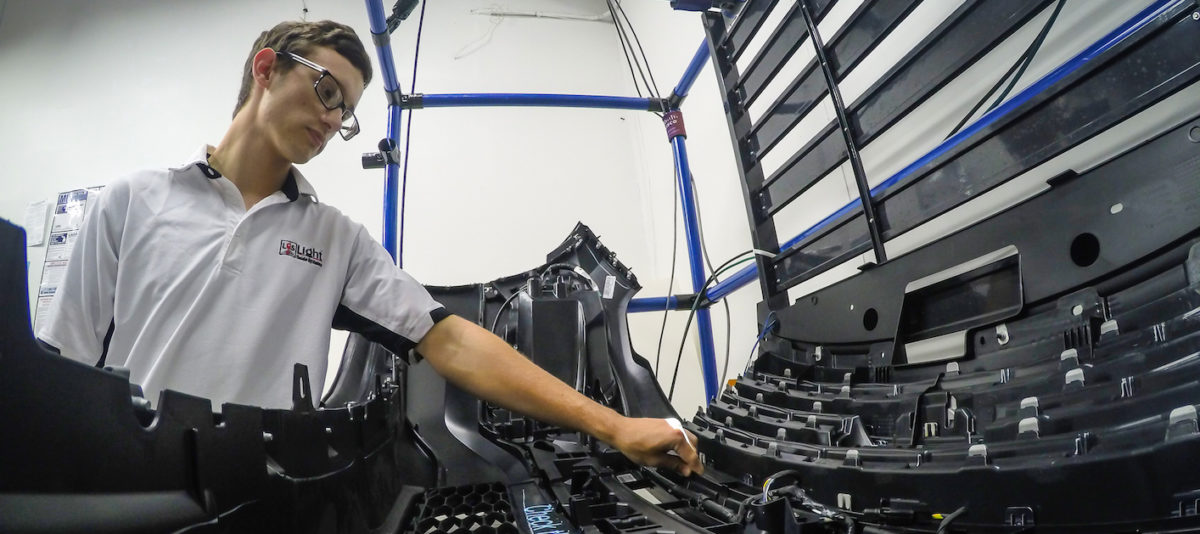
In the never-ending pursuit of perfection, manufacturers are constantly looking for ways to make every component better. The bedrock of every manufacturer is quality. In order to be considered valuable, any new tool or technology used to enhance efficiency and boost productivity must do so without sacrificing quality.
Quality is one of the key considerations we took into account when developing an augmented reality solution designed to streamline and simplify complex manual assembly, inspection, part kitting, sequencing and training processes, while establishing a new baseline for quality.
How Augmented Reality is Improving Quality
Designed specifically to make hard-copy and monitor-based instructions obsolete, the best augmented reality tools use a combination of high-powered projectors and industrial cameras to project essential information in the right place, and at the right time, directly onto the work surface.
This “digital canvas” allows technicians to focus on the task at hand and ensures that the right part is being used and the correct assembly sequence is followed—confirming that each part is made perfectly, every time.
Any manufacturer knows that recalls are costly–in more ways than one. It is far more cost-effective to prevent errors before they take place. Comprehensive process improvement and quality control starts with operator training—an arena where augmented reality solutions are making significant strides. But it also means catching mistakes as they are about to happen.
Even existing systems that are good at catching errors, typically just flag the mistake or halt the production process. The best augmented reality solutions take it a step further, correcting the error and guiding the user to the correct part or through the correct sequence.
Keeping a Pulse on KPIs
The bottom-line results generated by these AR solutions can be significant, even dramatic. Look no further than the World Class Manufacturing (WCM) Academy in Warren, Michigan, which was among the early adopters of high-end augmented reality-based manufacturing solutions.
The center trains approximately 5,000 manufacturing employees annually. When its hard-copy manual training and on-screen instructions were replaced with our flexible augmented reality-based system, they documented an 80% improvement in process quality and a 38% reduction in the overall process time.
Data from users of high-quality systems, such as LightGuide Systems, suggests that these dramatic results were not an anomaly. Users have documented a 90% reduction in errors and a 40-50% reduction in cycle time when operators use LightGuide Systems instead of traditional work instructions.
The outstanding results that have been achieved with LightGuide Systems in manufacturing environments have spurred additional adoption both inside and outside the U.S. LightGuide Systems is currently in use by many OEMs and Tier One automotive manufacturers around the world.
And it isn’t just automotive manufacturers that stand to benefit from more efficient operations and a big reduction in production errors. This unique blending of flexible and fully customizable augmented reality with human intelligence and machine vision technology is an ideal fit for a wide range of diverse industries, including aerospace, electronics, energy and medical.
After all, quality assurance and error reduction is hardly exclusive to automotive, and augmented reality seems likely to continue to become a reality for more and more manufacturers.
Here’s a look at just one of the many ways augmented reality can be used for quality control.
Interested in learning more about augmented reality and how it can be used to increase efficiency and improve quality? Send us a message. A member from our solutions team will be in touch to learn more about your challenges and talk though potential solutions.

